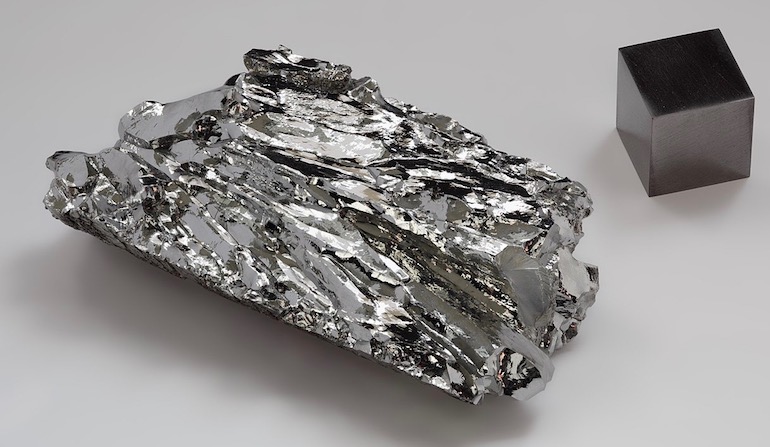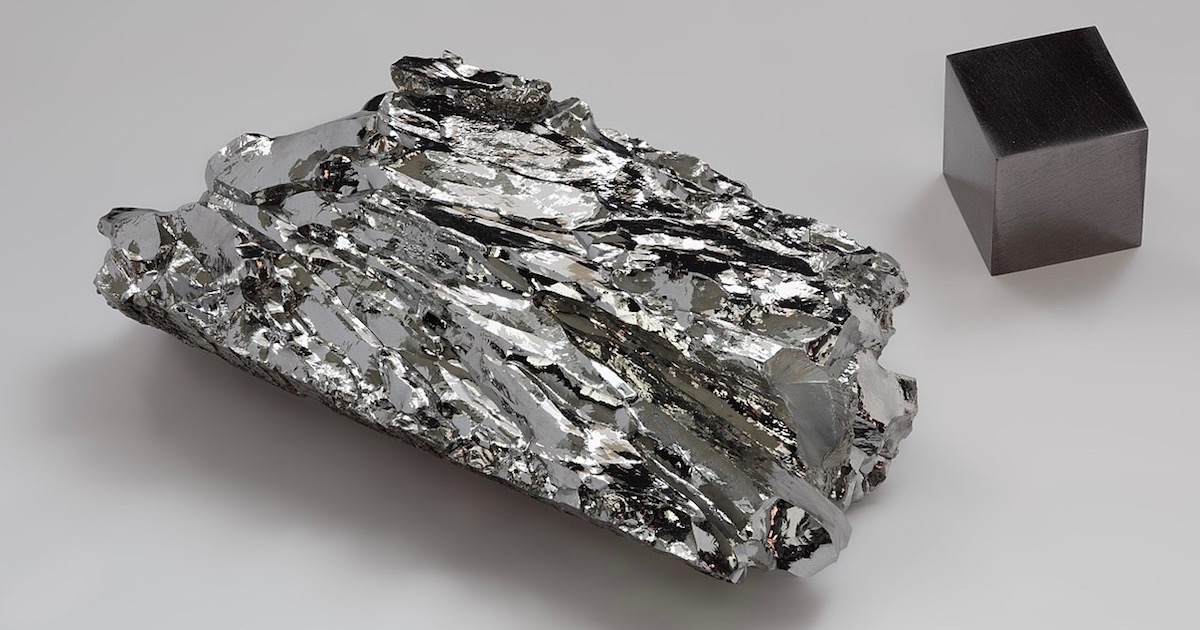 Intelligent Design
Intelligent Design
Molybdenum Is Stored in Cells by a Powered Piercing Machine


Molybdenum comprises the second smallest percentage of mass in a normal human body, but that trace amount serves a vital function in several key enzymes. Chemical element molybdenum, affectionately called “moly” by manufacturers, is classified as a refractory metal (i.e., able to retain its shape when heated), bearing similarities to lead. It was only declared a chemical element in 1790 with the abbreviation Mo. Because of its very high melting point, it is prized in industry for its ability to toughen steel and armor. Molybdenum’s abundance in Earth’s crust is estimated at 1.2 ppm, mined mostly in China, the United States, and Chile (molybdenum.com).
An Essential Element
Why would soft, squishy biology need such a hard substance? The answer is that without it, life would not be possible. A 2009 paper in Biochemistry begins:
The scarcity of molybdenum in the Earth’s crust belies its importance for the metabolism of living organisms and for the global biogeochemical cycles of major elements such as nitrogen, sulfur and carbon. In contrast, many elements that are present in considerably larger amounts have no apparent biological function (e. g. Al, Ti or Zr). Despite its low abundance — Mo ranks 53rd in the Earth’s crust — molybdenum is more available to biological processes than many other metals, which are found in chemical forms difficult to assimilate. [Emphasis added.]
Moly is a key element in the nitrogenase enzymes in bacteria that “fix” nitrogen by splitting the tough triple-bonded molecular nitrogen molecules in the atmosphere, so that single nitrogen ions can combine with other molecules like ammonia, and be taken up by plants. Without it, we would have no nitrogen cycle, no carbon cycle, no sulfur cycle, and no plants. We humans, too, along with all plants and animals, need trace amounts of this essential element for metabolic functions. The paper analyzed below begins:
Nature uses ATP binding/hydrolysis and subsequent ADP/phosphate release for driving manifold biochemical processes, including those in energy metabolism, active transport, DNA replication and maintenance, translation of genetic information, motility, and protein (un)folding.
“Holy Moly”
We typically get sufficient quantities of molybdenum in our diet. But how does this “holy moly” get from our food into the enzymes that need it? Prepare for a fascinating true story about molecular machines with weaponized armed sharpshooters.
As with any metal in the cell, Mo must be handled with care. Biochemists have known about a protein “cage” for storing molybdenum, known as the MoSto system, where molybdate crystals are stored for later use. They assumed that amino acids simply step aside for the crystals to enter the cage. A new paper in PNAS reveals a much more dynamic process. Mo crystals are literally shot into the cage by a kind of armor-piercing weapon. A team from the Max Planck Institute of Biophysics led by Steffen Brünle describes “Molybdate pumping into the molybdenum storage protein via an ATP-powered piercing mechanism.” This machine requires ATP power to fight against the concentration gradient:
This study on the cage-like molybdenum storage protein (MoSto) provides detailed insight into how nature realizes molybdenum biomineralization. Our data support the occurrence of molybdate kinase and pyrophosphatase reactions in MoSto to pump molybdate into the locked inner protein cage against a molybdate gradient. The high molybdate concentration in the cage causes a protein-assisted self-assembly process of molybdate to polyoxomolybdate clusters by which approximately 130 Mo are deposited in a compact manner. We believe that this molybdate pumping expands the known mechanistic repertoire of ATP-powered processes, since the chemical energy of hydrolysis of the phosphoric-molybdic anhydride intermediate would be conveyed onto the molybdate for penetration of the cage wall and not onto the protein for pore opening via conformational changes.
Needed: Energy
The MoSto cage has six domains, three alpha domains and three beta domains that fit tightly together. For the Mo to get in, it has to move fast to break the barrier. This requires energy.
The postulated direct conversion of chemical energy into kinetic energy via an activating molybdate kinase and an exothermic pyrophosphatase reaction to overcome a proteinous barrier represents a novelty in ATP-fueled biochemistry, because normally, ATP hydrolysis initiates large-scale conformational changes to drive a distant process.
Ready, Aim, Fire!
The machine is like a gun with armor-piercing bullets:
This action mode has striking analogies to the firing of a gun. A cartridge (molybdate) is put into a box (ATP-binding groove) and locked (fixation of the αN-terminal arm). The reaction is started by pushing the bolt (ATP) toward the cartridge, and the resulting chemical reaction (phosphoric-molybdic anhydride formation) induces an explosion (anhydride hydrolysis) and an acceleration of the bullet (molybdate) through the barrel to, for example, penetrate an object (cage wall). This gunshot-like mechanism requires a locked reaction chamber to ensure the directional movement of molybdate across the cage wall and thus prevent dissipation of the released energy into heat. For the same reason, the distance between the energy source and the energy-consuming event must be short (Fig. 6A), in contrast to the separation found in many other ATP-cleaving proteins.
Sound irreducibly complex? Think for a moment what might happen if any of these parts — the barrel, box, bolt, and bullet — were missing or out of tune. Entropy!
You have to admire the clever mechanisms of molecular machines. This one puts on quite a show. It “completely changed our view,” the authors say. Unfortunately, they could not see beyond their Darwin glasses.
Overall, MoSto is an impressive example of how a molybdate pump is developed from an ATP-consuming enzyme that underpins the postulated direction of evolution from binding proteins to enzymes and finally to complex machineries.
Well, OK. It’s a free country. They can believe that guns just evolve and shoot by aimless processes if they want to.
Photo: Molybdenum, by Alchemist-hp (talk) (www.pse-mendelejew.de) [FAL or GFDL 1.2], via Wikimedia Commons.
